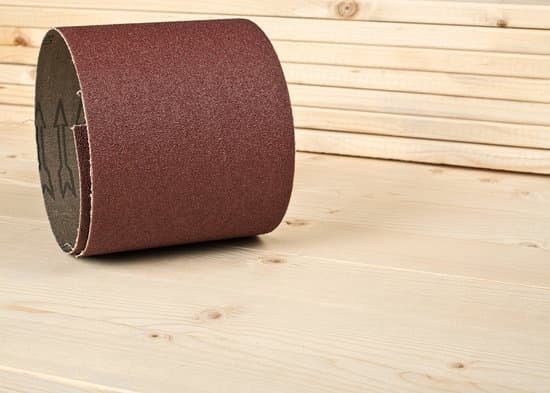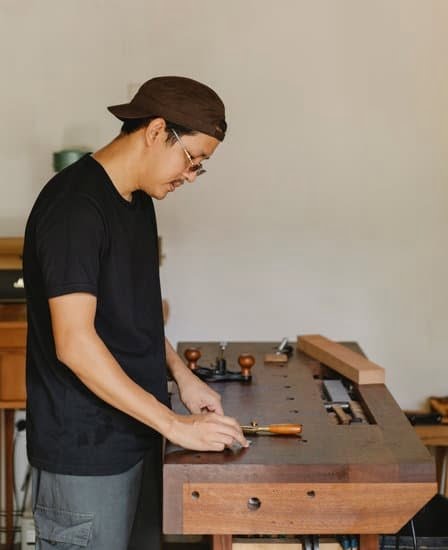Introduction
When it comes to woodworking, finding the right tool cabinet can mean the difference between success and failure. Many people enjoy making projects out of wood such as furniture, picture frames and other home décor items. With these types of projects come an amazing array of tools and materials. Having a proper system for storing and organizing these items is critical to ensure your projects are successful.
The right woodworking tool cabinet will make all the difference when it comes to your workshop projects. A high-quality workbench or wall-mounted system designed specifically to store your individual tool sets will guarantee that you always have the required items readily accessible whenever you start a project. This makes it easy to switch from one task to another without having to search endlessly for a misplaced item. Not only that, but keeping everything neat and organized with a high-quality storage system will give you more room in your shop; allowing for extra space for larger projects too!
A well-designed woodworking tool cabinet also ensures that all tools and materials are kept safe from dust and damage, allowing them to last longer than normal storage solutions. It also reduces noise levels by preventing clattering tools from interrupting your workflow during intense projects. Additionally, many cabinets come equipped with compartments where you can keep important papers that are related to the project at hand ” giving you easy access while keeping them safe from any type of wear or tear associated with their use over time. With so many benefits, finding the right woodworking tool cabinet becomes even more important if you’re serious about successful DIY projects!
Different Kinds of Woodworking Tool Cabinets and Their Uses
Woodworking tool cabinets are storage solutions for woodworkers of all skill levels and can be incredibly useful for organization and security. Depending on the size and shape of the woodworking tool cabinet, there are a range of uses. These include storing saws, drills, routers, hammers, files, chisels and many more tools.
The most basic type is a wall-mounted version which can hold up to thirty tools conveniently situated in walls, benches or even ceiling spaces while keeping them secure with a lockable door or latch. This type is great for those just starting out who may not require large storage areas as it takes up less space than other types of woodworking tool cabinets and has easy access.
Another popular style is a roller cabinet which generally consists of drawers that slide out on wheels for ease of mobility when transferring large amounts of tools from one place to another. They can come equipped with locks and are available in different sizes depending on whether it will be used at home or in a workshop.
it is also possible to purchase professional quality mobile carts that have enough space to store all kinds of small tools including nails, screws, screwdrivers and pliers along with bigger items such as saws and equipment like clamps. Some models feature open top sections while some include shelves or drawers so you can easily differentiate between smaller items as needed. Carts are perfect if you need to move your tools around frequently but want quick access when working; they are also ideal for someone who needs extra storage but does not have sufficient room in their workshop to store everything securely.
Benefits of Investing in a Woodworking Tool Cabinet
A woodworking tool cabinet provides organization and convenience when it comes to working with wood. Having a tool cabinet makes the process of locating tools and equipment much easier, eliminating wasted time searching through a cluttered shop. By keeping all of your tools organized in a clearly labeled cabinet with designated compartments, you can find what you need quickly and get on with the job at hand. Not only will having the right storage for your woodworking tools save you time, but it also protects both your tools and your workspace from damage caused by improper storage methods. Keeping tools safely tucked away in an enclosed space will help maintain their quality and keep potentially hazardous items from come into contact with your other projects or equipment. Investing in a decent quality woodworking tool cabinet may seem like a large expense up front, but it is sure to pay off in the long run.
Key Features to Look for in a Woodworking Tool Cabinet
The key features to look for in a woodworking tool cabinet are durability, storage capacity, and the ease of access. Durability is important when it comes to cabinets that contain valuable power tools because you want them to last for years before needing to be replaced. The best material for this is something like hardwood or even solid plastic or metal that won’t dent easily with everyday use. Storage capacity should also be a priority as most woodworking projects will require numerous tools and accessories. There should be sufficient tiers and drawers that can allow for adequate space between items to prevent breakage from overcrowding and easy access so that tools can quickly be taken out and put away without too much hassle. Additionally, some tool boxes may come with removable dividers where each tier can be divided up into specific compartments to help keep everything organized and accessible. Finally, there should also be options such as pull-out shelves that can help provide extra space when needed, as well as caster wheels on the base of the cabinet which makes it easier to transport around the workshop if necessary.
The Pros and Cons of Wood and Metal Tool Cabinets
Pros of Wooden Tool Cabinets:
One of the biggest pros of wooden tool cabinets is their aesthetic. Wood offers a classic and traditional look that can be carried throughout other areas of the home. They also offer plenty of storage space, allowing you to safely organize and store tools in an orderly fashion. Wooden tool cabinets are often made with sturdy construction materials like mahogany, oak and teak, ensuring a long-lasting quality cabinet that can stand up to the test of time and the wear and tear of your tools. Last but not least, they can be easily customized ” whether that’s adding custom drawers or drilling holes in specific places to organize tools ” meaning you get exactly what you need from your tool cabinet.
Cons of Wooden Tool Cabinets:
While wooden tool cabinets have many pros, there are also some cons that should be considered before purchasing one. Wood is more susceptible to moisture damage making it harder for wood cabinets to protect valuable tools from rusting or corroding over time. Wood is also more expensive than metal counterparts, making them an investment rather than a one-time purchase. The quality and durability can vary from model to model so it’s important to research prior purchases if possible when selecting your woodworking tool cabinet.
Evaluating Size Options When Choosing a Woodworking Tool Cabinet
Selecting a woodworking tool cabinet can be daunting, as there are a variety of sizes to consider. The size of the cabinet should depend on what type of tools and materials will be used in the project.
If a carpenter is planning to store large items such as saws and routers, they should look for a cabinet with more shelf space and deeper compartments. Generally, cabinets made from metal or plastic are preferred for larger products, as they are sturdier than wooden cabinets. For smaller projects like screwdrivers and sanders, a smaller cabinet will suffice. A lightweight wooden cabinet may be sufficient for small tools since it is easier to move around. Additionally, if working in limited spaces such as an apartment or small garage, measuring the available area before purchasing prevents the worker from committing to an oversized product.
Similarly, the amount of storage space needed should also be taken into account when choosing the right size woodworking tool cabinet. If only a few items need to be stored, then a compact single-door or double-door model will do just fine. Larger tools might require more drawers and areas inside or wider shelves that can accommodate wide items such as planers or CNC machines. There are many options on the market that can suit different needs; all it takes is finding one that fits the type and size of tools being used while being mindful of spatial constraints if any exist.
Practical Organization Tactics for Your Woodworking Tool Cabinet
Having an organized woodworking tool cabinet is essential when it comes to remaining productive in the workshop. Taking the time to optimize your tool cabinet’s storage capabilities and ensure all tools have a definitive home will go a long way in maintaining effective workflow. Here are some practical organization tactics for your woodworking tool cabinet:
1. Sort items by type. All wrenches of different sizes should be placed together, as should screwdrivers and other types of tools.
2. Introduce labels wherever possible. Keeping track of your items becomes much easier when you label individual drawers and compartments with a marker or sticky notes.
3. Utilize specialized drawer liners or dividers so that tools don’t get jumbled up or misplaced over time, and maximize the useable space within each drawer by utilizing bins with lids or adjustable shelves to fit awkward shapes and sizes of objects.
4. Use colored tape to wrap power cords around commonly used cordless tools, streamlining their storage process significantly so they can easily be grabbed off the shelf without being tangled in other cords or power adapter accessories.
5. Explore vertical storage techniques with specialized racks and holders such as pegboard wall hangers ” they’re great for storing larger hand saws, hammers, levels and more while still having them within easy arm’s reach when needed.
Simple Strategies for Maintaining Your Woodworking Tool Cabinet
1. Regularly clean and inspect your cabinet: It is important to clean off any debris or dust that has accumulated on the tools in your cabinet. Inspect all of the tools before use ” check for broken parts and sharp edges that can be dangerous while working with wood.
2. Proper storage: Store all tools in the designated tool compartments within the cabinet. This will help keep them organized and prevent them from setting on top of each other, which could lead to a snowballing accumulation of dust and corrosion buildup over time.
3. Label drawers: Labeling the drawers within your cabinet can help you keep everything in order, so you always know where to find specific tools when you need them.
4. Apply coating to protect against rust and corrosion: Give your cabinet an occasional coat of a protective material such as polyurethane or wax to minimize rust and corrosion buildup stemming from humidity and moisture exposure.
5. Keep it away from moisture and direct sunlight: Too much moisture or contact with direct sunlight can damage both the tool cabinet itself and its contents inside, so make sure to store it somewhere safe to preserve it for longer periods of time.
The Advantages of Designing a Custom Woodworking Tool Cabinet
A custom woodworking tool cabinet offers many distinct advantages compared to a standard toolbox. For one, the size and shape of a traditional toolbox limit what and how much can be stored within it. A custom cabinet, however, can be tailored to fit your exact needs and preferences, allowing you to have a wide range of tools available while keeping them organized. Additionally, a custom cabinet can be built to match the style and decor of your work area, giving it an attractive look that allows you to take pride in your workspace. Furthermore, with features like removable drawers and adjustable shelves, you can quickly move around or add new items as needed without any hassle. Finally, by opting for custom cabinetry instead of mass-produced options from stores, there’s less worry about matching colors or finishes due to discrepancies in quality manufacturing processes. As such, designing and creating your own woodworking tool cabinet is far more efficient than just purchasing one off the shelf.
How to Find an Affordable, Quality Woodworking Tool Cabinet
When searching for an affordable, quality woodworking tool cabinet, research is the key. Begin by looking over reviews from both professional and amateur woodworkers who have previously bought the type of tool cabinet that you are interested in. Also consider asking others in the woodworking community for their opinions, as they can provide helpful insight into which products offer quality and good value. In addition to reviews, also conduct some price comparison shopping to determine which vendor or retailer might offer the best deal on your tool cabinet.
It is also necessary to review the physical construction of a tool cabinet before making a purchase”especially if purchasing it used. Check that all pieces fit together properly and make sure that the wood is in good condition without excessive wear and tear. If buying new, pay attention to details like overall design, materials used, number of compartments and drawers, how much weight it can hold, etc., as these aspects can vary greatly between models. If possible, try out several different models side by side so you can get a better sense of ease-of-use and durability between products. Furthermore, look for extra features such as built-in dust collection systems or anti-sway support arms ” these can improve safety during use but may come with an additional cost attached. Lastly, be sure to confirm any delivery procedures or warranty information before finalizing a purchase
Conclusion
A woodworking tool cabinet is an invaluable investment if you are in the woodworking field. Not only will it provide protection for your tools, but also serve as a convenient way to organize your tools so that they are within easy reach while you work. Quality tool cabinets come in many designs and styles, such as those with drawers or a pegboard system to help you keep organized and access essential equipment quickly. Investing in a quality design not only helps you to store and organize your tools effectively, but it can also provide additional countertop space. While choosing the right size for your cabinet is important, do remember to also ensure that it is well-made and durable so that it can withstand heavy loads and regular use over time. The overall condition of the material will significantly impact on its longevity. A quality construction with robust materials is essential if you want maximum results from your investment.

Hi everyone! I’m a woodworker and blogger, and this is my woodworking blog. In my blog, I share tips and tricks for woodworkers of all skill levels, as well as project ideas that you can try yourself.





